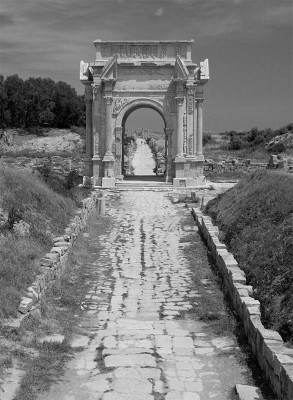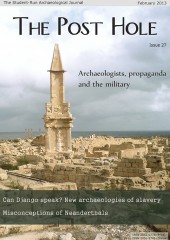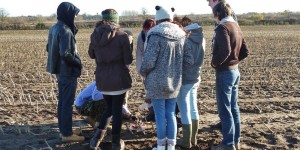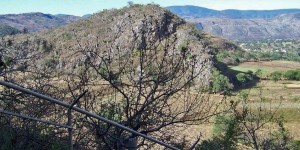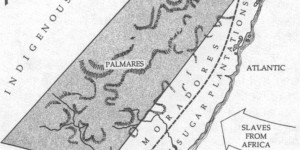The political uprisings of the Arab Spring from 2010 through to the present have seen the involvement of archaeologists and academics within the role of heritage management during political crises. However, with the pressure applied from Western nations and organisations, these academics have become embedded in a military-archaeology complex which needs serious critique in order to retain the integrity and neutrality of the discipline. Using Libya as the central case study, this article aims to highlight the issues surrounding the work of archaeologists in military situations, including the compiling of no-strike lists and the potential use of archaeological sites in military operations and political propaganda. Furthermore, the role of archaeologists in supporting potentially illegal and immoral military interventions is examined.
Western economic and political ideologies have continued to remain dominant globally without the direct colonial presence of the 19th century (Hamilakis 2009). The last decade has seen the West apply increasing pressure and assert its hegemony across the globe; particularly in the Middle East for its economic and political potential. Whilst the roles of archaeologists in this neo-colonist world have been more frequently critiqued recently (c.f. Hamilakis 2009), the role of the embedded archaeologist involved within the military-archaeology complex remains to be seriously evaluated. This has been demonstrated recently by the involvement of heritage specialists and archaeologists working with the military in the recent conflict in Libya.
Archaeologists believe they remain neutral and have the best intentions of fulfilling their roles as stewards of material culture and heritage; many believe some action is better than none in the face of war, demonstrated in previous conflicts such as that in Iraq (Stone 2005). However, by maintaining this belief, archaeologists are ignoring the wider political and ethical issues surrounding conflict and the militarisation of archaeology. To avoid critiquing their position would be to ignore the humanitarian issues which are part of conflict and military intervention and would jeopardise their roles as academics and the discipline’s integrity.
First, we must consider the evidence for a neo-colonialist and imperialist ideology as a result of the impact of globalisation and the political and economic hegemony imposed by the West (particularly the USA). Several studies in recent years have focussed on this as a result of the rise of “indigenous archaeologies”, claims for cultural restitution and the repatriation of human remains (see for examples, Bahn 1984; Greenfield 1986; Gareth Jones & Harris 1998; Bauer et. al. 2007). There is evidently an increasing concern with the way in which archaeology is used and carried out under neo-colonialist ideologies and to support the indirect claims for superiority by Western nations (cf. Gosden 2001; Pollock 2003, 2005; Hamilakis 2003, 2004, 2009, 2012a; Given, 2004, 4).
What is fascinating, however, is that whilst there has been increasing concern for the protection of cultural heritage in military conflicts, there have been a very small number of archaeologists who have begun to critique the role of heritage specialists and the discipline in military situations. This is particularly of concern when one considers the continuing political unrest in the Middle East, and Western pressure placed upon countries as a result; a combination which has, in turn, accounted for the appearance of the military-archaeology complex (Hamilakis 2009).
In this particular case, the conflict in Libya will provide the key demonstration of the role archaeology plays within the military in terms of propaganda, rhetoric, heritage management and the press. However, other cases such as Iraq and Afghanistan should be kept in mind as all provide shocking similarities between the ways in which archaeologists deal with these situations.
The ethical implications of archaeological practice are more regularly discussed today. However, often our perception of the role of archaeologists as ‘stewards of material culture’ and the archaeological record itself obscures the way in which archaeologists view the political situations in which they work. In the case of imminent or possible military interventions, the immediate priority of heritage specialists and archaeologists has become the compilation of a no-strike list. The first of its kind was seen in Iraq (Stone 2005; Emberling 2008, 449). These involve an assessment of archaeological sites, and prioritising those which are the most important and require protection in the event of air strikes or military operations. They are then passed on to the military and are intended to be used in strategic and operations planning in order to preserve the sites on that list.
Whilst on the surface no-strike lists seem like the best option for archaeologists, as they ensure the protection of at least some important cultural heritage, often the ethical implications and underlying connotations are overlooked. The prioritisation of particular sites implies that archaeological deposits, and therefore cultural heritage, can be placed into a hierarchy.
By producing such a hierarchy, specific cultures or histories may be either promoted or discarded, and implies the dominance of certain cultures at the expense of others. These no-strike lists are often compiled to protect sites of importance to ‘humanity’- but what we perceive as ‘humanity’s’ cultural heritage is often a Western ideal, not that of other cultures (and particularly those of indigenous populations). By imposing these ideals as superior to other cultures, those in the Western world get to decide which archaeological sites are of importance.
The International Committee of the Blue Shield, a non-governmental organisation which aims to protect cultural property (Cole 2008; ANCBS n.d), sent a team to Libya to assess the potential damage as a result of UN intervention to cultural sites. This was in association with the International Military Cultural Resources Work Group (IMCRG). The team was comprised of individuals from other countries and the leading expert was Karl von Habsburg (an Austrian). Only one member was Libyan, and he had a specific interest in Classical archaeology - thus, in combination with an entirely Western team, the prioritising of Classical World Heritage sites was prominent; even the prehistoric rock art at Tadrart Acacus is not mentioned in the reports, despite it being a World Heritage Site (ANCBS and IMCRG 2011a; ANCBS and IMCRG 2011b; UNESCO 2012). Other archaeological sites, such as Zuwarah, Germa, and Mesak Settafet are also ignored in the reports.
It is also worth noting that some members of the team have military backgrounds – highlighting explicitly the military-archaeology complex. Clearly, the ethical implications of no-strike lists are overlooked during the compilation of such hierarchies; their production implies the insignificance of certain cultures for the history of humanity. It can also allow the appropriation of material culture by the West; not only implying that culture can be “owned”, but there are also connotations of superiority and racism underlying these claims. A similar case to Libya can be seen with the appropriation of Mesopotamian material during the Iraq conflict (see Pollock 2005). In Libya, however, Classical archaeological sites such as Leptis Magna are appropriated as representative of ‘humanities’ heritage.
Another ethical dilemma for archaeologists, highlighted by the Libyan conflict, is the use of culture for propaganda purposes by the military. The UN, NATO and the rebel forces have particularly been the primary organisations using archaeological heritage in order to appear heroic and benevolent (Butler 2011a; Enserink 2011; Harding 2011). Furthermore, archaeologists themselves have been known to take a similar viewpoint, whether intentionally or not, and often those involved in the military-archaeology complex adopt the rhetoric of the regime (Hamilakis 2004). This portrayal of the military to the public uses archaeological material and sites, often depicting them as neglected or targeted by the opposing regime. Butler’s (2011b) article offers just one of many examples of this, claiming:
“Research into and conservation of the country's rich cultural heritage could expand in the wake of this year's revolution, after decades of neglect by the Gaddafi regime” (Butler 2011b, emphasis added).
NATO (2012) has also used rhetoric specifically for this purpose:
“During the conflict in Libya there were allegations that pro-[G]adhafi troops and missiles were being hidden in the ancient city of Leptis Magna and that Gaddafi was using it as an archaeological shield” (NATO 2012, emphasis added).
Others have taken the stance of portraying the intervening forces as ‘rescuing’ the archaeology from conflict and saving it from destruction, or by posing as the forces which enabled the revival in archaeological research. Indeed, many reports including those by the Archaeological Institute of America (2011), NATO (2012), and D’Emilio (2011) portray the UN and NATO forces in this way, using phrases such as:
“Libya's famed ancient Roman sites, including the sprawling seaside ruins of Leptis Magna, were spared damage by NATO during the recent airstrikes, says a London-based Libyan archaeologist” (D’Emilio 2011, emphasis added).
Such propaganda has not only been found in press releases or newspaper articles. Imagery has been shown in recent studies to be extremely powerful for the construction of knowledge and identity, particularly of past cultures (Moser 2001; Smiles and Moser 2004). Images have been used to portray such organisations as benevolent and peaceful, rather than as an aggressive military force which intervenes for the political agendas of member nations. For example, amidst a news report entitled ‘Protecting Libya’s Heritage’ on NATO’s website is a slideshow which has as its main photo an “Aerial view of Leptis Magna as children run through it” (NATO 2012).
In its most blunt form archaeology is being explicitly used to demilitarise NATO’s campaign in Libya, and makes it appear innocent and as the saviour of archaeological heritage (Hamilakis 2012b); after all, Leptis Magna is a World Heritage Site ‘belonging’ to ‘humanity’. Again, Classical sites are focussed upon, this time being used in propaganda where the political agenda of military organisations and its members are using archaeology to further their own cause and supplement the neo-colonialist connotations discussed earlier.
The use of archaeology as propaganda is not unusual. However, in the case of conflict and in particular those occurring in the Middle East in recent years, the ethical and political implications of this have been largely ignored and need urgently addressing. By complying with organisations which use archaeological sites in this manner, archaeologists are inadvertently supporting a regime which is neo-colonialist in nature and imposes Western superiority over other regimes which do not suit their own economic or political agendas. It has also been shown that archaeologists do not only just comply with such organisations, but can adopt the rhetoric of the regime within their own academic work (Hamilakis 2004).
It is widely accepted that the invasion of Iraq was illegal, and motivations for military action were to gain strategic access and control over oil resources (Burkeman and Borger 2003; BBC 2010; Bignell 2011). There is much speculation that this is almost certainly the reason behind intervention in Libya against Gaddafi’s regime and that intervention was illegal as it was not backed by Congress (Dreyfuss 2011; International Fellowship of Reconciliation 2011; Kucinich 2011; Macalister 2011). By providing information through working as heritage specialists for the military, and by inadvertently supporting the regime or openly adopting their rhetoric, archaeologists are aiding the cover-up of issues which should be addressed both by the discipline and the general public.
The use of propaganda in the media and through imagery is especially powerful in altering perceptions and the views of the public towards military organisations and conflicts (for examples see Hernan and Chomsky 1988; Kellner 1995 - both summarised in Pollock 2005). The use of media ensures that the government’s ideology is portrayed to the mass public, and thus ensures that the majority of people believe in or agree with their policies, in this case with regards to the intervention in Libya. The mounting evidence suggests that invading or intervening forces were not acting out of moral compassion, ethical reasoning or to install democracy, but in order to further their economic and political gains in the Middle East and thus retain and expand their hegemonic hold over the globe.
As such, it is unlikely that archaeologists would be used by organisations such as NATO in order to solely protect cultural heritage for the sake of conservation alone; instead, their role in this situation is to provide some legitimacy and support for the regime. It is not enough to claim that these archaeologists are “just doing their job” by saving as much heritage as they can whilst remaining impartial to the wider political and ethical implications of their work, as is the feeling one gets when reading Stone’s (2005) article. They are surely aware of the role they play as the embedded archaeologist and that their work is likely to be biased (c.f. Teijgeler 2008). By remaining ignorant to the ethical crises around them and the political implications of their work, these archaeologists passively supported a potentially illegal regime which sought to dominate resources such as oil and ensure political power, no matter what the human cost is in lives or psychological damage following the systematic or accidental destruction of culture and heritage. And it is not just the archaeologist; academics as a whole have been known to ignore these issues, or in some cases suppress opposition to the conflicts if it directly impacts their work or day-to-day lives (c.f. Bernbeck 2003).
The problem, then, appears to be where the line should be drawn between the roles of the archaeologist as an academic and the ‘steward of material culture’, a civilian, and a member of the military force. This is not easy. Whilst the archaeological record and the notion of stewardship have been shown to be concepts as opposed to reality (Patrik 1985), they nonetheless dominate Western archaeological thought and practise today, and the way archaeologists carry out their work surrounds this, as was the case in Libya.
The problem arises when we need to step back and examine the consequences of their roles in military organisation as heritage specialists. An academic should “belong to an intellectually autonomous field, one independent of religious, political, economic, or other power” (Bourdieu 1989, 99 - cited in Hamilakis 1999). This is a role where they are involved in military operations which are supported by the political and economic agendas of Western governments and organisations, and where civilian lives and humanitarian issues are often ignored because the preservation of material culture is the most pressing issue (one only has to look at reports such as those by Allsopp (2011), Butler (2011a), and Harding (2011)).
In addition, when an archaeologist becomes embedded in a regime which imposes its will onto others for its own economic benefit and political gain they automatically forfeit their role as a civilian and become a combatant (Mourad 2007). Particularly, the reliance on the military in situations of warfare or political unrest for safety and the donning of military uniforms automatically signifies their role as part of the military machine in this regime, and was the case when considering the operations by the Blue Shield (Teijgeler 2008; ANCBS 2011a).
I am not suggesting that archaeologists do nothing in the face of the potential destruction of archaeological sites, deposits and cultural heritage as a result of military conflicts. But it is imperative that the way in which archaeologists seek to protect them is questioned, examined and addressed if those archaeologists and the discipline wish to remain autonomous; the ethical and political implications of their work must be recognised and considered, and as much as possible done to prevent the potential misuse of this work in military situations.
By questioning the wider implications of these actions, and instead of becoming the embedded archaeologist, working with a range of people including those of the ‘country to be occupied’ will ensure that the culture which they believe to be important is preserved, as well as those of importance to Western cultures. This would lessen the ability of the military forces on both sides to use cultural heritage as propaganda in their regimes. A similar suggestion is made by Mourad (2007, 166). The archaeologist would also remain more politically neutral and unbiased towards the military force which protects them.
Furthermore, involving archaeologists from the country of conflict prior to the invasion or intervention would have profound effects on preserving all aspects of culture and heritage, not just those that are important to the West and which can be manipulated to serve as propaganda. Their involvement would diminish the neo-colonialist connotations surrounding the work of archaeologists in these military situations at present.
Work of the embedded archaeologist and heritage specialist should also be made public to the wider academic community to allow others to critique the position of their colleagues, the military, and the work of heritage specialists in these situations. This would ensure closer monitoring of the situation and hopefully limit the extent to which archaeological work is used to further support for the rhetoric of the neo-imperialist regime and within the military strategies. To do so would ensure that the role of archaeologists in the military machine and its agenda would not continue without any opposition to the ethical and political dilemmas surrounding these conflicts.
Clearly, the militarisation of archaeology in the last decade has provided new ethical and political dimensions to the discipline which have, it would seem, been largely unaddressed by the embedded archaeologist and the wider academic community. Archaeologists who chose to become involved need to remember that they are not just the ‘stewards of material culture’, but they too are humans with a voice who could, if they chose to, become more politically neutral by conducting their work with more emphasis on the people who will be affected by the conflict as opposed to embedding themselves within the military.
In addition, creating an archaeological hierarchy which ultimately ensures sites which are seen to be important to the Western world are favoured whilst others are targeted and sacrificed is ethically unsound and needs serious reconsideration when conducting future pre-conflict surveys. The conflict in Libya and archaeologists’ involvement there have shown that the archaeologist’s work, although intentionally to save as much heritage as possible, has been used for propaganda and by the media to assert the idea that the military’s polices are not aggressive and dominating, but heroic.
The role of the archaeologist in conflict needs to be defined and revised – should archaeologists be explicitly involved in a regime which ensures economic and political strategic objectives are placed over the importance of civilian life and morality? This new dimension to archaeology poses many challenges and issues which need to be urgently addressed, before they are repeated again.
Bibliography
- Allsopp, L. (2011) ‘Looting of Libyan Treasure Highlights Illicit Antiquities Trade’. CNN. Available at: http://edition.cnn.com/2011/11/11/world/europe/looted-treasure-libya/ind... [Accessed 10th March 2012]
- Archaeological Institute of America (2011) ‘AIA Calls on U.S and Libya to Protect World Heritage Sites’. Available at: http://www.archaeological.org/news/aianews/5325 [Accessed 3rd March 2012]
- Association of National Committees of the Blue Shield (ANCBS) (n.d.) ‘About The Blue Shield’. Available at: http://ancbs.org/index.php?option=com_content&view=article&id=41&Itemid=19 [Accessed 10th March 2012]
- Association of National Committees of the Blue Shield (ANCBS) and International Military Cultural Resources Work Group (IMCRG) (2011a) ‘Mission Report’. Available at: http://www.blueshield.at/libya_2011/11-2011/mission_report_libya_11-2011... [Accessed 6th March 2012]
- Association of National Committees of the Blue Shield (ANCBS) and International Military Cultural Resources Work Group (IMCRG) (2011b) ‘Mission Report’. Available at: http://www.blueshield.at/libya_2011/09-2011/mission_report_libya_09-2011... [Accessed 6th March 2012]
- Bahn, P. (1984) ‘Do not disturb? Archaeology and the rights of the dead’. Oxford Journal of Archaeology. 3. 127-139
- Bauer, A., Lindsay, S. and Urice, S. (2007) ‘When theory, practise and politics collide, or why do archaeologists support cultural property claims?’, in Y. Hamiulakis, and P. Duke (eds.) Archaeology and Capitalism: From Ethics to Politics. Walnut Creek: Left Coast Press. 45-58
- BBC (2010) ‘Iraq inquiry: Former UN inspector Blix says war illegal’. BBC News: Politics. Available at: http://www.bbc.co.uk/news/uk-politics-10770239 [Accessed June 2012]
- Bernbeck, R. (2003) ‘War-time Academic Professionalism’. Public Archaeology. 3. 112-116
- Bignell, P. (2011) ‘Secret memos expose link between oil firms and invasion of Iraq’. The Independent. Available at: http://www.independent.co.uk/news/uk/politics/secret-memos-expose-link-b... [Accessed June 2012]
- Bourdieu, P. (1989) ‘The corporation of the universal: the role of the intellectual in the modern world’. Telos. 81. 99-110
- Burkeman, O. and Borger, J. (2003) ‘War critics astonished as US hawk admits invasion was illegal’. The Guardian. Available at: http://www.guardian.co.uk/uk/2003/nov/20/usa.iraq1 [Accessed June 2012]
- Butler, D. (2011a) ‘Libya's "Extraordinary" Archaeology Under Threat’. Nature News. Available at: http://www.nature.com/news/2011/110302/full/news.2011.132.html [Accessed 4th March 2012]
- Butler, D. (2011b) ‘Revolution offers chance for Libyan Archaeology’. Nature News. Available at: http://nature.com/news/revolution-offers-chance-for-libyan-archaeology-1... [Accessed 4th March 2012]
- Cole, S. (2008) ‘War, Cultural Property and the Blue Shield’, in P.G. Stone and J. Farchakh Bajjaly (eds.) The Destruction of Cultural Heritage in Iraq. Woodbridge: Boydell Press. 65-72
- D'Emilio, F. (2011) ‘Expert: NATO raids spared Libyan Antiquities’. Culture in Development. Available at: http://www.cultureindevelopment.nl/index.php?id=125&sub_id=1384 [Accessed 4th March 2012]
- Dreyfuss, R. (2011) ‘Obama's NATO War for Oil in Libya’. The Nation. Available at: http://www.thenation.com/blog/162908/obamas-nato-war-oil-libya [Accessed 3rd March 2012]
- Emberling, G. (2008) ‘Archaeologists and the Military in Iraq, 2003-2008: Compromise or Contribution?’. Archaeologies. 4(3). 445-459
- Enserink, M. (2011) 'Revolution Brings New Hope for Libyan Archaeology'. Science. 334(6058). 885
- Gareth Jones, D. and Harris, R.J. (1998) ‘Archaeological human remains: scientific, cultural and ethical considerations’. Current Anthropology. 39(2). 253-264
- Given, M. (2004) The Archaeology of the Colonised. London: Routledge
- Gosden, C. (2001) ‘Postcolonial Archaeology Issues of Culture, Identity and Knowledge’, in I. Hodder (ed.) Archaeological Theory Today. Cambridge: Polity Press. 241-261
- Greenfield, J. (1986) ‘The return of cultural property’. Antiquity. 60. 29-35
- Hamilakis, Y. (1999) ‘La trahison de archéologues? Archaeological Practise as Intellectual Activity in Postmodernity’. Journal of Mediterranean Archaeology. 12(1). 60-79
- Hamilakis, Y. (2003) ‘Iraq, Stewardship and “The Record”: An Ethical Crisis for Archaeology’. Public Archaeology. 3. 104-111
- Hamilakis, Y. (2004) ‘Whose World and Whose Archaeology? The Colonial Presence and the Return of the Political’. Archaeologies. 1(2). 94-101
- Hamilakis, Y. (2009) ‘“The War on Terror” and the Military-Archaeology Complex: Iraq, Ethics and Neo-Colonialism'. Archaeologies. 5(1). 39-65
- Hamilakis, Y. (2012a) ‘Are we Postcolonial Yet? Tales from the Battlefield’. Archaeologies. 8(1). 67-76
- Hamilakis, Y. (2012b) ‘Not being at home in one's home: ontology, temporality, critique’. Forum Kritische Archäologie. 1. 12-23
- Harding, L. (2011) ‘Libya rebels claim Roman city of Sabratha from regime’. The Guardian. Available at: http://guardian.co.uk/world/2011/aug/19/rebels-claim-roman-city-sabratha [Accessed 3rd March 2012]
- Herman, E.S. and Chomsky, N. (1988) Manufacturing Consent: The Political Economy of the Mass Media. New York: Pantheon Books
- International Fellowship of Reconciliation (2011) ‘NATO intervention in Libya is in its own (oil) interest’. Available at: http://www.ifor.org/publications/Nato%20intervention%20in%20Libya%20is%2... [Accessed 1st March 2012]
- Kellner, D. (1995) Media Culture: Cultural Studies, Identity and Politics between Modern and Postmodern. London: Routledge
- Kucinich, D. (2011) 'The US must end its illegal war in Libya now'. The Guardian. Available at: http://www.guardian.co.uk/commentisfree/cifamerica/2011/jul/06/libya-nato1 [Accessed 3rd March 2012]
- Macalister, T. (2011) 'So, was this a war for oil?’. The Guardian. Available at: http://guardian.co.uk/commentisfree/2011/sep/02/next-war-libya-one-for-oil [Accessed 3rd March 2012]
- Moser, S. (2001) ‘Archaeological Representation: the visual conventions for constructing knowledge about the past’, in I. Hodder (ed.) Archaeological Theory Today. Cambridge: Polity Press. 262-283
- Mourad, T.O. (2007) ‘An Ethical Archaeology in the Near East: Confronting Empire, War and Colonisation’, in Y. Hamilakis and P. Duke (eds) Archaeology and Capitalism: From Ethics to Politics. Walnut Creek: Left Coast Press. 151-168
- NATO (2012) ‘Protecting Libya’s Heritage’. Available at: http://www.nato.int/cps/en/SID-5DC67941-E7846204/natolive/news_82441.htm [Accessed 1st March 2012]
- Patrik, L.E. (1985) ‘Is there an archaeological record?’, in M. Schiffer (ed.) Advances in Archaeological Method and Theory. 8. Waltham: Academic Press. 27-62
- Pollock, S. (2003) ‘The Looting of the Iraq Museum, Thoughts on Archaeology in a Time of Crisis’. Public Archaeology. 3. 117-124
- Pollock, S. (2005) 'Archaeology Goes to War at the Newsstand', in S. Pollock and R. Bernbeck (eds.) Archaeologies of the Middle East: Critical Perspectives. London: Blackwell. 78-96
- Smiles, S. and Moser, S. (2004) Envisioning the Past: Archaeology and the Image. Oxford: Blackwell
- Stone, P. (2005) ‘The Identification and Protection of Cultural Heritage During the Iraq Conflict: A Peculiarly English Tale’. Antiquity. 79. 933-943
- Teijgeler, R. (2008) ‘Embedded Archaeology: An Exercise in Self Reflection’, in P.G. Stone and J. Farchakh Bajjaly (eds.) The Destruction of Cultural Heritage in Iraq. Woodbridge: Boydell Press. 173-182
- UNESCO (2012) ‘World Heritage List’. Available at: http://whc.unesco.org/en/list [Accessed June 2012]


